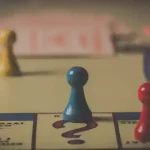Understanding the Mechanics of Colour Prediction Games
Growing in popularity recently, color prediction games draw a wide spectrum of players from many backgrounds. Often utilizing colors as the fundamental element, these games are interesting and provide players with the excitement of forecasting the result of a particular occurrence. Though they look simple initially, knowing the principles behind these games shows the complex mechanisms that help you enhance your gaming experience. This article explores the operations of color prediction games, the factors influencing the results, and what participants should know to raise their possibilities of success.
What Are Colour Prediction Games?
Color 101 game prediction games are a form of gambling or amusement where participants forecast the result of a particular event based on colors. Sequences of colors which are either generated at random or dictated by a system are shown to players, and they need to predict which will show up next.
The simple nature of the game’s concept frequently stands in contrast to the tactics and expertise needed to achieve success. Although the fundamental concept relies on chance, a degree of skill and comprehension of patterns can greatly affect the result.
How Colour Prediction Games Work
Color prediction games depend on random occurrences, typically governed by a computer or a software algorithm, which creates the colors that players are meant to predict. These sequences are converted into colors, which can be presented to the players. The integrity of these games is guaranteed by employing an effectively designed PRNG, which aids in producing statistically impartial outcomes.
Once players have made their predictions, they await the result, which is disclosed after a predetermined time. The algorithm generally decides the winning colors, and the payouts are allocated based on the odds established by the game. These probabilities can change based on the game, the platform, or the degree of difficulty present.
Role of Randomness and Probability
The essence of Color Prediction 101 game games lies in randomness since the result of every event relies on a random choice of colors. Though this randomness adds a factor of chance, grasping the probabilities can assist players in making better-informed forecasts.
The likelihood of forecasting the accurate color is usually determined by the game developers, yet players frequently notice trends or sequences as time passes. For instance, some colors might show up more often than others, leading players to believe that a trend or pattern exists.
Although these observed trends might appear important, they are often mere coincidences, and depending only on them can result in misguided choices. Grasping the real essence of probability in these games aids players in acknowledging the boundaries of pattern recognition and avoids the urge to place their bets in assumed trends.
Techniques for Playing Color Predicting Games
Though the results of color prediction games are random, players can use specific techniques to optimize their enjoyment and increase their odds of success. To try to recoup past losses, one often used tactic is the “Martingale System,” in which one doubles the bet following every defeat. Though this approach has great theoretical potential, it requires a large bankroll.
Long-term success in color prediction games depends on proper bankroll management which is another important strategy. Setting boundaries on their willingness to spend and following these restrictions helps players avoid financial overextension.










